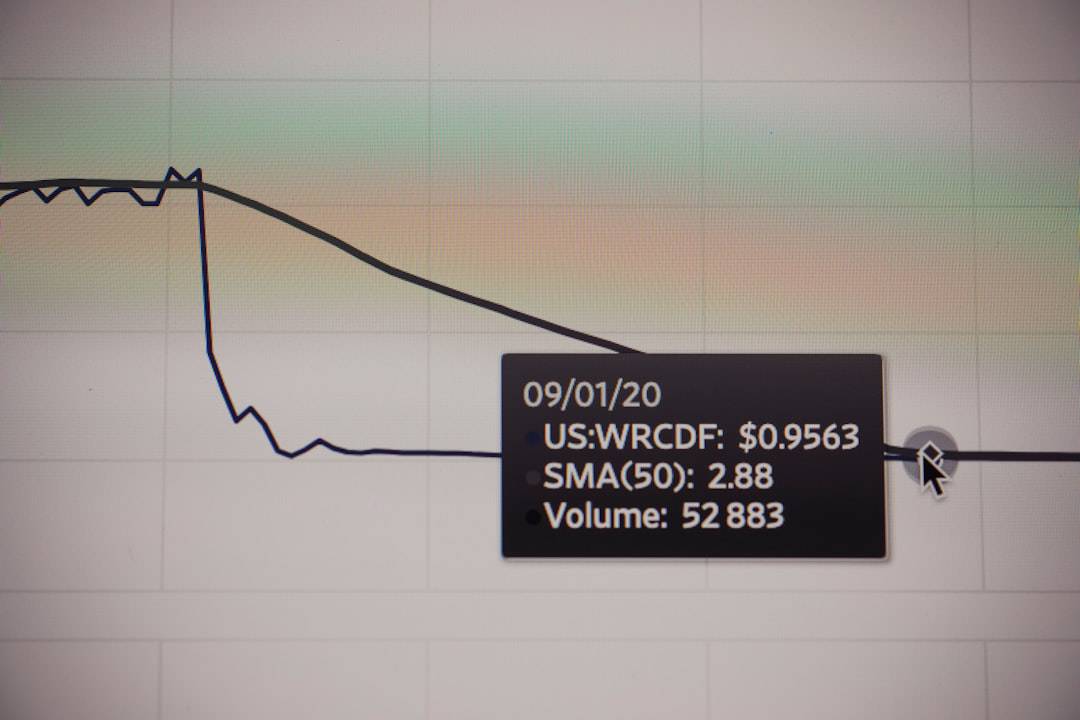Zero Trust Network Access (ZTNA) is a modern security paradigm that has gained significant prominence in cybersecurity. Unlike traditional security models that assume internal network elements are trustworthy, ZTNA operates on the principle of “never trust, always verify.” This approach requires continuous authentication and authorization for all users and devices, regardless of their location or network status. ZTNA implementation involves transitioning from perimeter-based security to a more granular and dynamic model.
This shift enables organizations to better secure their networks and data, particularly in environments where employees access corporate resources from diverse locations and devices. By verifying the identity and security posture of every user and device before granting access to applications and resources, ZTNA provides enhanced protection against unauthorized access and data breaches. The adoption of ZTNA offers organizations a more secure and flexible method for managing access to applications and data.
This approach ensures that only authorized users with trusted devices can access specific resources, irrespective of their physical location or network connection. Consequently, ZTNA not only bolsters security measures but also contributes to improved user experience and increased productivity within the organization.
Key Takeaways
- Zero Trust Network Access (ZTNA) is a security model that eliminates the idea of trust based on location and assumes that every access request is a potential threat.
- Implementing ZTNA with Zscaler provides benefits such as improved security posture, reduced attack surface, and simplified network management.
- Key components of ZTNA architecture include identity verification, device posture assessment, least privilege access, and continuous monitoring and analytics.
- Zscaler facilitates ZTNA implementation by providing a cloud-based platform that integrates seamlessly with existing infrastructure and offers comprehensive security and visibility.
- Best practices for implementing ZTNA with Zscaler include defining access policies based on user and device attributes, conducting regular security assessments, and educating employees on security best practices.
- Overcoming challenges in implementing ZTNA with Zscaler involves addressing legacy infrastructure limitations, ensuring user adoption and compliance, and managing the complexity of security policies.
- Future trends in ZTNA and Zscaler integration include the adoption of AI and machine learning for advanced threat detection, the expansion of ZTNA to IoT devices, and the integration of ZTNA with other security technologies for a holistic approach to network security.
The Benefits of Implementing Zero Trust Network with Zscaler
One of the leading providers of ZTNA solutions is Zscaler, a cloud security company that offers a comprehensive platform for secure access to applications and data. Implementing Zscaler’s Zero Trust Network Access solution brings a multitude of benefits to organizations looking to enhance their security posture and enable secure remote access for their employees. Firstly, Zscaler’s ZTNA solution provides seamless and secure access to applications, regardless of the user’s location or device.
This means that employees can work from anywhere without compromising security or performance. Furthermore, Zscaler’s ZTNA solution offers comprehensive visibility and control over user access to applications and data. This allows organizations to enforce granular access policies based on user identity, device posture, and application sensitivity.
By doing so, organizations can prevent unauthorized access and reduce the risk of data breaches. Additionally, Zscaler’s ZTNA solution integrates with other security tools and platforms, providing a holistic approach to security. This ensures that organizations can leverage their existing security investments while enhancing their security posture with ZTNA.
Key Components of Zero Trust Network Architecture

The architecture of a Zero Trust Network is built on several key components that work together to create a secure and dynamic access environment. One of the fundamental components is identity verification, which involves authenticating the user’s identity before granting access to applications and data. This can be achieved through multi-factor authentication (MFA) or other identity verification methods.
Another crucial component is device posture assessment, which evaluates the security posture of the user’s device before allowing access. This ensures that only trusted devices are granted access to sensitive applications and data. Additionally, application segmentation is an essential component of ZTNA architecture.
This involves segmenting applications and data based on their sensitivity and access requirements. By doing so, organizations can enforce granular access policies and reduce the risk of unauthorized access. Furthermore, encryption plays a vital role in ZTNA architecture by securing data in transit and at rest.
This ensures that even if unauthorized access occurs, the data remains protected. Lastly, continuous monitoring and analytics are key components of ZTNA architecture, providing organizations with real-time visibility into user access and behavior. This allows organizations to detect and respond to potential security threats proactively.
How Zscaler Facilitates Zero Trust Network Implementation
| Metrics | Data |
|---|---|
| Reduced Attack Surface | By enforcing policies based on user identity and device posture, Zscaler reduces the attack surface and minimizes the risk of lateral movement. |
| Continuous Monitoring | Zscaler provides continuous monitoring of user and device behavior, allowing for real-time threat detection and response. |
| Granular Access Control | Organizations can implement granular access control policies based on user identity, device posture, and application access, ensuring least privilege access. |
| Secure Remote Access | Zscaler enables secure remote access for users, regardless of their location, by providing secure and direct access to applications. |
| Integration with Identity Providers | Zscaler integrates with leading identity providers to enforce strong authentication and access policies based on user identity. |
Zscaler facilitates Zero Trust Network implementation through its comprehensive platform that provides secure access to applications and data from any location or device. One way Zscaler enables ZTNA implementation is through its cloud-native architecture, which allows organizations to deploy ZTNA without the need for on-premises hardware or infrastructure. This provides organizations with flexibility and scalability while ensuring a consistent level of security across all locations and users.
Furthermore, Zscaler’s ZTNA solution integrates seamlessly with other Zscaler security services, such as cloud security and web security, providing organizations with a unified security platform. This integration allows organizations to leverage their existing security investments while enhancing their security posture with ZTNAdditionally, Zscaler’s platform offers comprehensive visibility and control over user access to applications and data, enabling organizations to enforce granular access policies based on user identity, device posture, and application sensitivity.
Best Practices for Implementing Zero Trust Network with Zscaler
When implementing Zero Trust Network with Zscaler, there are several best practices that organizations should consider to ensure a successful deployment. Firstly, organizations should conduct a thorough assessment of their current network infrastructure and security posture to identify potential gaps and vulnerabilities. This will help organizations tailor their ZTNA implementation to address specific security needs and requirements.
Another best practice is to define clear access policies based on user identity, device posture, and application sensitivity. Organizations should establish granular access controls to ensure that only authorized users with trusted devices can access sensitive applications and data. Additionally, organizations should prioritize user education and awareness to ensure that employees understand the importance of ZTNA and their role in maintaining a secure access environment.
Furthermore, organizations should leverage Zscaler’s comprehensive visibility and control capabilities to monitor user access and behavior in real-time. This will enable organizations to detect and respond to potential security threats proactively. Lastly, organizations should regularly review and update their ZTNA implementation to adapt to evolving security threats and business requirements.
Overcoming Challenges in Implementing Zero Trust Network with Zscaler

While implementing Zero Trust Network with Zscaler brings numerous benefits, organizations may encounter challenges during the deployment process. One common challenge is the complexity of integrating ZTNA with existing network infrastructure and security tools. To overcome this challenge, organizations should work closely with Zscaler’s experts to ensure a seamless integration that aligns with their specific security requirements.
Another challenge is ensuring a smooth user experience while maintaining a high level of security. Organizations should prioritize user education and awareness to help employees understand the importance of ZTNA and how it enhances their security without compromising productivity. Additionally, organizations should leverage Zscaler’s user-friendly interface and seamless access capabilities to provide employees with a positive user experience.
Furthermore, organizations may face challenges related to compliance requirements when implementing ZTNA with Zscaler. To address this challenge, organizations should work with legal and compliance teams to ensure that their ZTNA implementation aligns with industry regulations and standards. Additionally, organizations should leverage Zscaler’s comprehensive visibility and control capabilities to demonstrate compliance with regulatory requirements.
Future Trends in Zero Trust Network Access and Zscaler Integration
Looking ahead, the future of Zero Trust Network Access and Zscaler integration is promising as organizations continue to prioritize security in an increasingly digital world. One future trend is the adoption of artificial intelligence (AI) and machine learning (ML) technologies to enhance ZTNA capabilities. AI and ML can help organizations analyze user behavior patterns and detect anomalies in real-time, enabling proactive threat detection and response.
Another future trend is the convergence of ZTNA with other security technologies, such as Secure Access Service Edge (SASE). This convergence will provide organizations with a unified platform for secure access and comprehensive security capabilities, further enhancing their security posture. Additionally, as remote work becomes more prevalent, the demand for flexible and scalable ZTNA solutions will continue to grow, driving innovation in cloud-native architectures and seamless access capabilities.
Furthermore, the future of Zero Trust Network Access will see increased emphasis on zero trust principles beyond the network perimeter. This means applying zero trust principles to every aspect of an organization’s digital environment, including endpoints, applications, and data. As a leader in cloud security, Zscaler will continue to play a pivotal role in driving these future trends by providing innovative solutions that enable organizations to embrace zero trust principles across their entire digital footprint.
In conclusion, Zero Trust Network Access is a critical security concept that provides organizations with a more effective way to manage access to applications and data in today’s dynamic digital environment. By implementing Zero Trust Network with Zscaler, organizations can enhance their security posture, enable secure remote access for employees, and ensure compliance with regulatory requirements. While there are challenges associated with implementing Zero Trust Network with Zscaler, organizations can overcome these challenges by following best practices and leveraging Zscaler’s expertise and comprehensive platform.
Looking ahead, the future of Zero Trust Network Access and Zscaler integration is promising as organizations continue to prioritize security and embrace innovative technologies to enhance their security posture.
If you’re interested in exploring the future of digital reality, you may want to check out this article on the metaverse. Just as zero trust network Zscaler is revolutionizing the way we think about network security, the metaverse is opening up new possibilities for immersive digital experiences. Both concepts are pushing the boundaries of what we thought was possible in the digital realm.
FAQs
What is Zero Trust Network Zscaler?
Zero Trust Network Zscaler is a security concept and framework that assumes no trust in any user or device inside or outside the corporate network. Zscaler is a cloud-based security platform that provides zero trust network security solutions.
How does Zero Trust Network Zscaler work?
Zero Trust Network Zscaler works by continuously verifying the identity and security posture of every user and device trying to access the corporate network. It uses a combination of user and device authentication, encryption, and policy-based access controls to ensure secure access.
What are the benefits of using Zero Trust Network Zscaler?
Some of the benefits of using Zero Trust Network Zscaler include improved security posture, reduced risk of data breaches, better visibility and control over network traffic, and the ability to enforce consistent security policies across all users and devices.
Is Zero Trust Network Zscaler suitable for all types of organizations?
Zero Trust Network Zscaler is suitable for organizations of all sizes and industries. It can be tailored to meet the specific security needs and compliance requirements of different organizations, making it a versatile solution for a wide range of use cases.
How does Zero Trust Network Zscaler differ from traditional network security approaches?
Traditional network security approaches typically rely on perimeter-based security measures, such as firewalls and VPNs, to protect the corporate network. Zero Trust Network Zscaler, on the other hand, focuses on securing individual users and devices regardless of their location, making it more effective in today’s mobile and cloud-centric environments.











Leave a Reply